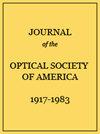Calibration and performances of the MicrOmega instrument for the characterization of asteroid Ryugu returned samples.
Journal of the Optical Society of America and Review of Scientific Instruments
Pub Date : 2022-05-01
DOI:10.1063/5.0082456
引用次数: 5
Abstract
MicrOmega, a miniaturized near-infrared hyperspectral microscope, has been selected to characterize in the laboratory the samples returned from Ryugu by the Hayabusa2 mission. MicrOmega has been delivered to the Extraterrestrial Samples Curation Center of the Japanese Aerospace eXploration Agency at the Institute of Space and Astronautical Science in July 2020 and then mounted and calibrated to be ready for the analyses of the samples returned to Earth on December 6, 2020. MicrOmega was designed to analyze the returned samples within a field of view of 5 × 5 mm2 and a spatial sampling of 22.5 µm. It acquires 3D near-infrared hyperspectral image-cubes by imaging the sample with monochromatic images sequentially covering the 0.99-3.65 µm spectral range, with a typical spectral sampling of 20 cm-1. This paper reports the calibration processes performed to extract scientific data from these MicrOmega image-cubes. The determination of the instrumental response and the spectral calibration is detailed. We meet or exceed the goals of achieving an accuracy of ∼20% for the absolute reflectance level, 1% for the relative wavelength-to-wavelength reflectance, and <5 nm for the peak position of the detected absorption features. For the nominal measurements of Ryugu samples with MicrOmega/Curation, the instrument performance also reaches a signal-to-noise ratio of >100 over the entire spectral range. By characterizing the entire collection of the returned samples at the microscopic scale, MicrOmega/Curation offers the potential to provide unprecedented insights into the composition and history of their asteroid parent body.小行星龙宫返回样品表征MicrOmega仪器的标定与性能研究。
MicrOmega是一种小型化的近红外高光谱显微镜,已被选中在实验室中对隼鸟2号任务从龙宫带回的样品进行表征。MicrOmega已于2020年7月交付给空间与航天科学研究所的日本宇宙航空研究开发机构地外样本管理中心,然后进行安装和校准,为2020年12月6日返回地球的样本分析做好准备。MicrOmega的设计目的是在5 × 5 mm2的视场和22.5µm的空间采样范围内分析返回的样品。在0.99 ~ 3.65µm的光谱范围内,对样品进行单色成像,获得三维近红外高光谱图像立方体,典型光谱采样为20 cm-1。本文报告了从这些MicrOmega图像立方体中提取科学数据的校准过程。详细介绍了仪器响应的测定和光谱校准。我们达到或超过了以下目标:绝对反射率水平的精度为20%,相对波长与波长反射率的精度为1%,整个光谱范围的精度为100。通过在微观尺度上描述返回样本的整个集合,MicrOmega/Curation提供了对其小行星母体的组成和历史的前所未有的见解。
本文章由计算机程序翻译,如有差异,请以英文原文为准。
求助全文
约1分钟内获得全文
求助全文

 求助内容:
求助内容: 应助结果提醒方式:
应助结果提醒方式:


